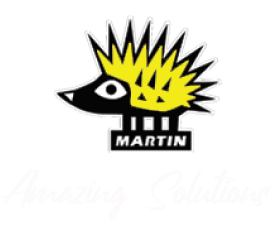Coated abrasives exist in a great variety of kinds, shapes and sizes, as they are produced for different applications, such as sanding, grinding, polishing and finishing.
They consist of 3 basic elements: a layer of abrasive grains on a flexible or semi-rigid backing held together by a bond.
BACKINGS
Backings must be strong to resist high speed and pressure sanding and grinding and in the meantime flexible to easily adapt to workpiece contours.
Backings can be in paper, cloth, vulcanized fibre and a combination of paper and cloth.
ABRASIVE PAPER
Light backings are more flexible, while heavy backings are used to have a stronger mechanical resistance.
Paper weights are expressed in grams per square metre and are indicated with a letter according to the following table:
A = 70g/m2 and B = 90/110 g/m2. Light and flexible, they are mainly used for dry and wet manual sanding applications.
C = 110/135 g/m2. More resistant and less flexible than the previous ones, it is used for dry and wet manual finishing applications and for low-powered sanding machines.
D = 135/160g/m2. This backing is used both for the C-wt applications with mid-powered portable sanders and for narrow belts on fixed sanding machines.
E = 185/225 g/m2. It is used to prevent paper from cracking, so for discs and wide belts in medium and fine grits.
F = 250/300 g/m2. It is the heaviest and the least flexible, so ideal for the toughest applications when coarse grits are required and for wide and sectional belts.
ABRASIVE CLOTH
Cloth backings are more durable than paper backings, offer greater tear resistance and can withstand continuous flexing during use. They can be divided into 2 main categories depending on the fibres they are made of: natural cotton, usually for dry applications, and polyester, suitable for wet applications.
As for papers, they are classified by their weight.
J = It is the lightest and flexible backing and it is used when surface finishing and uniformity are more important than removal. It is ideal when flexibility is requested, as for applications on contours and curved surfaces.
X = It is a good compromise between resistance and flexibility and it is used in both coarse-grit roughing and fine-grit polishing applications.
Y = It is stronger and more resistant than the previous one, it is used for heavy-duty applications such as metal grinding with narrow belts and calibrating wooden panels with wide belts.
H = It is the most resistant backing and so it is used in coarse-grit applications for high stock removals.
FIBRE
Made of multiple layers of vulcanized cellulose, fibre backings are extremely rigid and resistant and are particularly suitable for the manufacture of discs for high-speed portable sanding tools.
COMBINATION
A heavy paper is coupled with a light cloth, it is used when resistance to tearing and cracking is required.
ABRASIVE GRAINS
Abrasive grains consist of natural or artificial minerals selected according to their characteristics of hardness, toughness, heat resistance, shape and type of fracture.
All these features indicate how an abrasive grain can penetrate, cut, grind and remove material from a surface.
Aluminium oxide: it is extremely tough and crush-resistant. It is ideal for roughing and finishing applications on metals with high mechanical resistance and for hard wood sanding.
Silicon carbide: it is the hardest and sharpest of the minerals commonly used in coated abrasives. It is ideal for non-ferrous metalworking (aluminium, brass, bronze, magnesium, titanium), for fairly soft materials such as rubber and for hard materials such as glass, stone and ceramic.
Zirconium: it gets stronger during processing, so it is long-lasting in removal applications. It is suitable for metal grinding (especially stainless steel) and woodworking, as the grains, while fracturing, produce new cutting peaks extending the life of the abrasive.
Ceramic aluminium oxide: it the most technological and advanced product and its pure micro-crystal structure crumbles more regularly than zirconium. Its durability, aggressiveness, and consistency in cutting action are far superior to any other abrasive grit.
COATING
Closed: closed-coated products have a high density of abrasive grains and are suitable for processing very hard materials for an excellent finish quality.
Open: open-coated products have spaces between the abrasive grains ensuring high resistance to clogging.
NO-FILL SPECIAL TREATMENTS
To achieve high resistance to clogging, a layer of zinc stearate is laid on top of the second bonding layer. The result is that products give excellent finishes in plaster woodworking and in automotive.
ANTISTATIC PRODUCTS
When sanding non-electroconductive materials, electrostatic charges make dust adhere to the belt and can cause early clogging. Products with antistatic treatment eliminate this danger and are particularly suitable on machines when the suction system has limited power.
BONDS
G = natural glue
It is a jelly obtained from animal furs and can be used pure or mixed with inert fillers. As this glue tends to soften as a result of the heat generated during work, it is particurarly indicated for hand finishing operations and light applications.
UF = ureic resin PF = fenolic resin
Synthetic resins are used with additives to provide greater hold, greater flexibility or other desired characteristics.
They are highly heat resistant and long-lasting in high removal operations but finishing results coarser.
Some products are made with both types of bonds, where the lower layer is natural glue, for a good finish, and the upper layer is synthetic resin, for good heat resistance.
JOINTS
![]()

